Orbital wheel
The wheel can be considered one of the most important inventions important in the history of mankind. Its principle has remained the same for thousands of years. But in 1989, Franco Sbarro surprised everyone by reinventing the wheel.
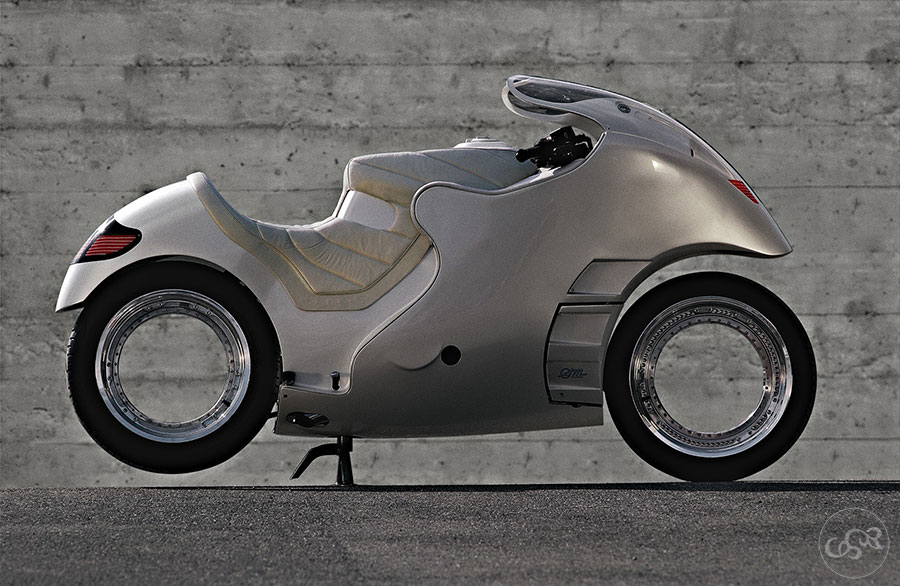
The idea
Franco Sbarro's orbital wheel, a hubless
wheel, is based on a very simple idea: the stresses applied to
a wheel are at ground level, on the outer periphery. A wheel
without an axle supports the vehicle at its lowest point. The
center of gravity is lowered for better roadholding.
The wheel has two components:
- a rotating part comprising the tire, a tubular rim matching
the inner face of the tire, and a brake ring;
- a fixed part, articulated to the inner tread of the wheel,
where the connecting triangles, steering bar and braking
clamps are mounted.
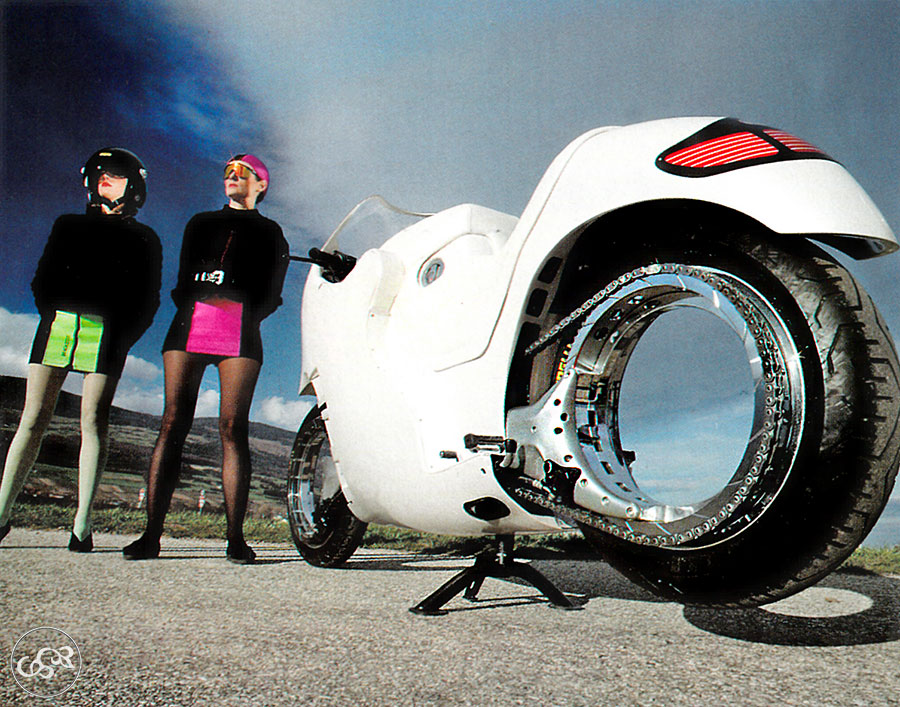
From theory to practice
This orbital wheel required a very large-diameter bearing. Franco Sbarro turned to SKF, a Swedish company specializing in bearings. Then, with Dominique Mottas, Franco Sbarro founded Sbarro Mottas Engineering, which set up the Osmos (Original Sbarro Mottas Orbital System) program, culminating in the presentation of the Osmos coupé and three particularly spectacular motorcycles.
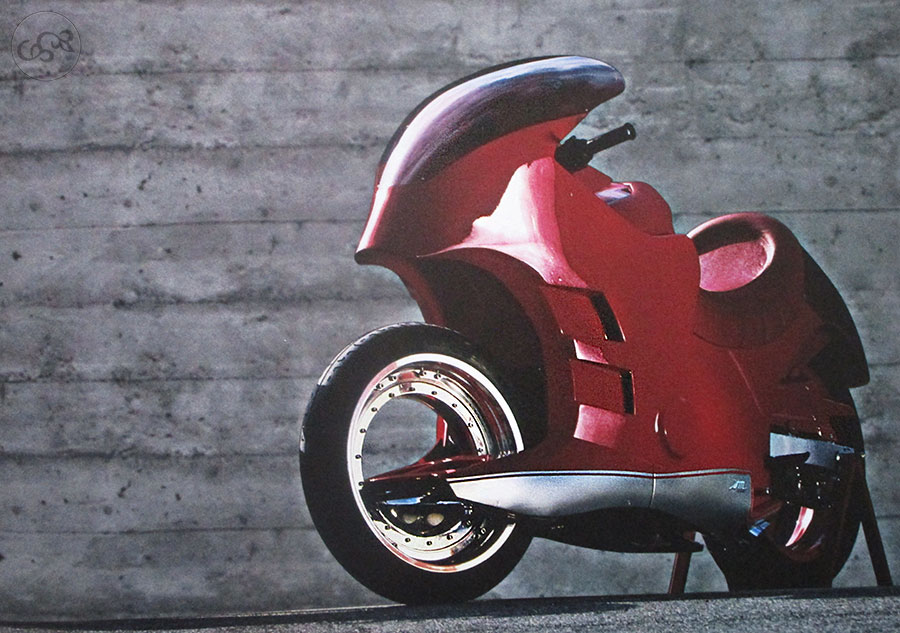
"Orbital" motorcycles
More than the Osmos
coupé, it was the motorcycles equipped with the
orbital wheel that caused a sensation. It has to be said that
the absence of a hub is more "visible" on a two-wheeler than
on a car.
- The first bike, in white, is surely the purest. On the
right-hand side, there's nothing to suggest any connection
between the bike and its wheels;
- the second bike, red, has a visible front linkage arm that
conceals the lower part of the wheel. At the rear, it has a
conventional wheel with hub and chain;
- the third bike is more of an educational tool. The bodywork
is only hinted at with metal wires, allowing a clear view of
the whole orbital wheel link arm.
It's worth noting that another astonishing machine was
equipped with the orbital wheel: the Aero. This sidecar,
launched in 2000 to promote the watch inspired by the orbital
wheel, reappeared at the Mondial de l'Automobile and the Essen
Motor Show in 2008.
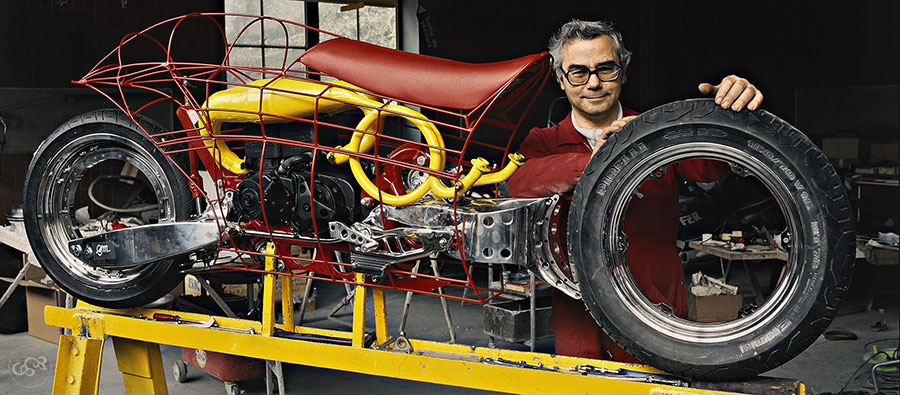
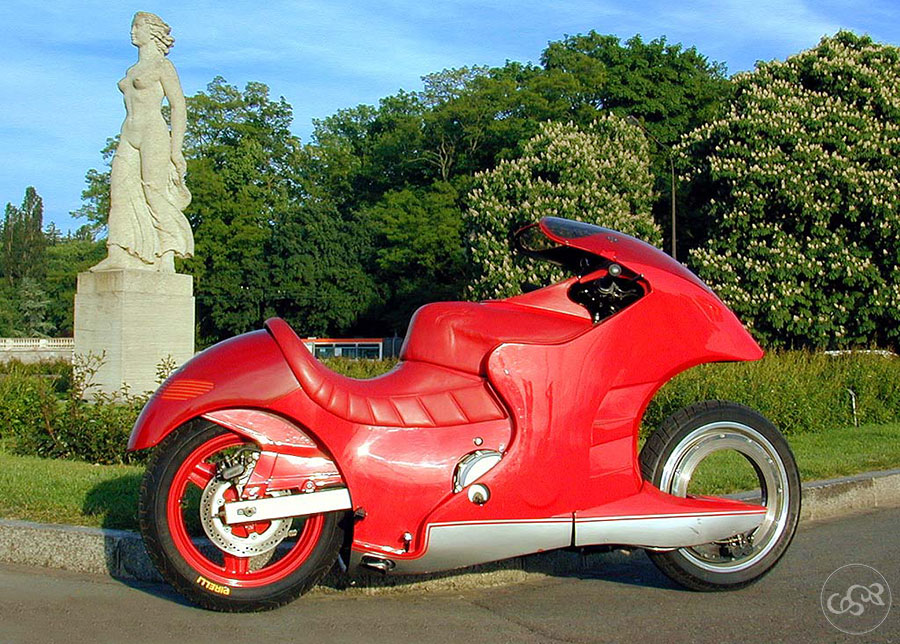
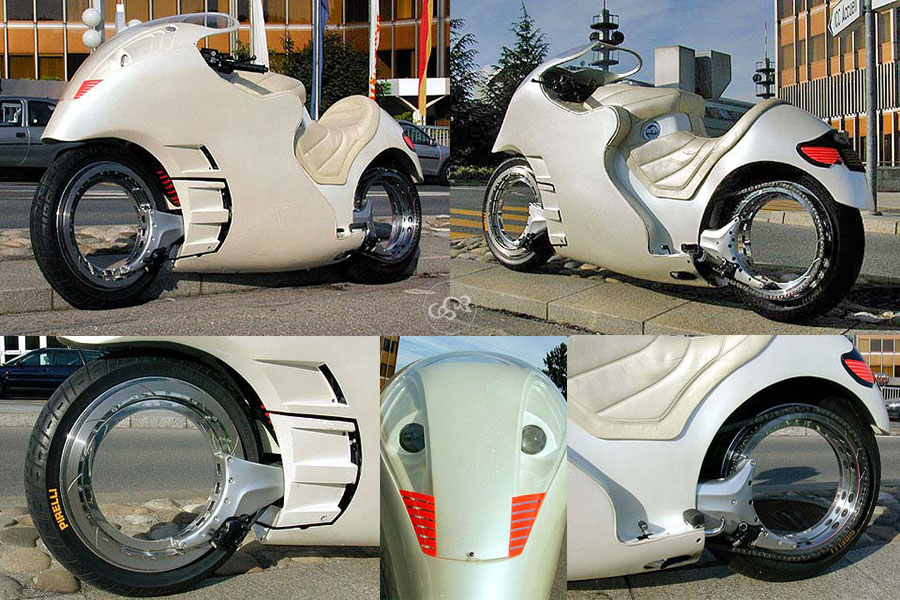

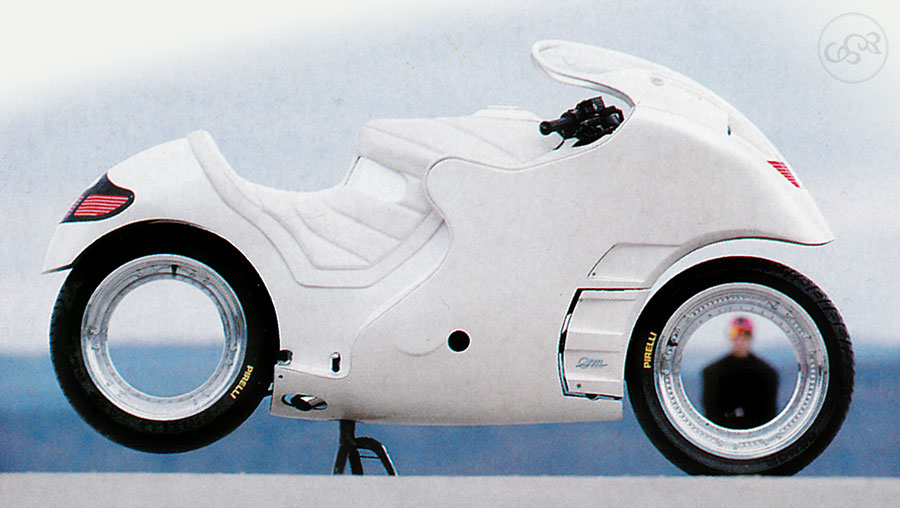
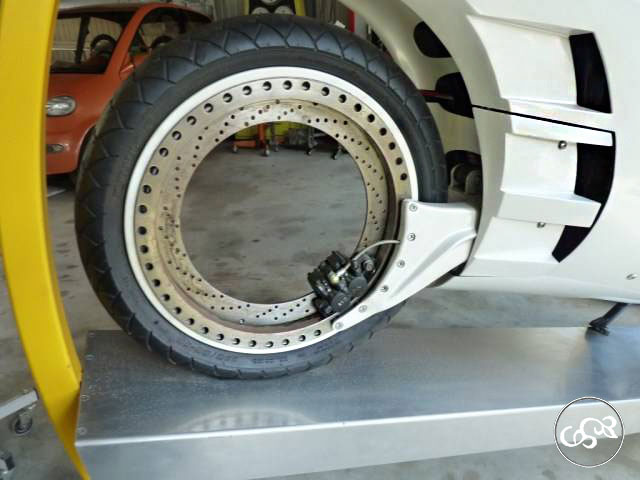
In brief
1- Hubless wheel
2- Anchoring links as close to the ground as possible
3- Unique visual appearance